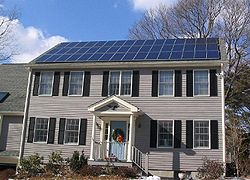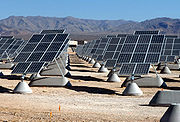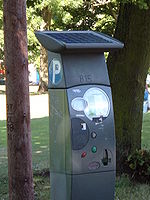PHOTOVOLTAIC PANELS
Renewable Energy from Alternative Sources
SOLAR PANELS
For a Better Future

photovoltaic panels: TYPE OF INTEGRATION OF FOTOVOLTAIC PLANT: OVER THE ROOF, OVER THE GROUND and on the WATER!Solar photovoltaics (PVs) are arrays of cells containing a material that converts solar radiation into direct current electricity. Materials presently used for photovoltaics include amorphous silicon, polycrystalline silicon, microcrystalline silicon, cadmium telluride, and copper indium selenide/sulfide.[1] Due to the growing demand for renewable energy sources, the manufacture of solar cells and photovoltaic arrays has advanced dramatically in recent years.
|
IN BUILDING Photovoltaic solar panels on a house roof.
In transportPV has traditionally been used for auxiliary power in space. PV is rarely used to provide motive power in transport applications, but is being used increasingly to provide auxiliary power in boats and cars. Recent advances in solar race cars, however, have produced cars that with little changes could be used for transportation. Standalone devices
Solar parking meter.
Until a decade or so ago, PV was used frequently to power calculators and novelty devices. Improvements in integrated circuits and low power LCD displays make it possible to power such devices for several years between battery changes, making PV use less common. In contrast, solar powered remote fixed devices have seen increasing use recently in locations where significant connection cost makes grid power prohibitively expensive. Such applications include parking meters, emergency telephones, temporary traffic signs, and remote guard posts & signals.
Rural electrificationDeveloping countries where many villages are often more than five kilometers away from grid power have begun using photovoltaics. In remote locations in India a rural lighting program has been providing solar powered LED lighting to replace kerosene lamps. The solar powered lamps were sold at about the cost of a few month's supply of kerosene. Cuba is working to provide solar power for areas that are off grid. These are areas where the social costs and benefits offer an excellent case for going solar though the lack of profitability could relegate such endeavors to humanitarian goals.
|



